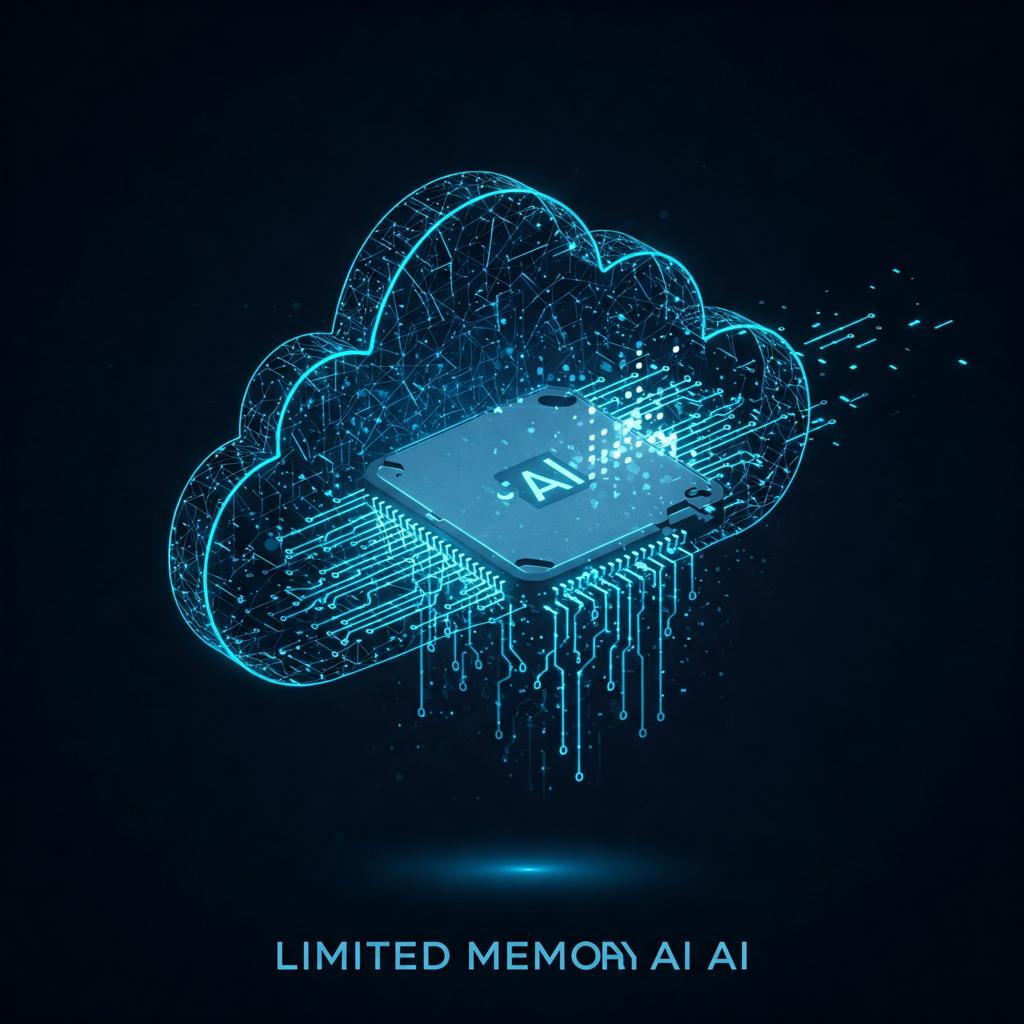
Limited Memory AI: Key Features and Real-World Uses
Artificial intelligence (AI) is a rapidly evolving field of study and technology that involves computer systems to perform tasks that require the human brain to do them the way they have been done. Under this extremely broad tent, there is a broad classification that distinguishes systems as those that can employ previous experiences to inform current behavior and those that cannot.
One of the earliest evolutionary accomplishments to transcend elementary reactive systems is the Limited Memory Artificial Intelligence. It is defined by the recollection of previous things or recent information for a limited time. It is kept data, however, that dictates the system's responses and decisions in the future but in the current moment. As compared to machines, which act only based on the current inputs,
Limited Memory AI does have a temporal quality that enables it to see sequences and discern patterns emerging within short time windows. Its entire functioning is based on the ability to access relatively recent passed observations, resulting in a more dynamic as well as contextualized response mechanism. It is this class whose application needs to be leveraged in order to realize the full potential of most modern AI systems facing complex and dynamic worlds.
What is Limited Memory
The "memory" being alluded to here needs to be clearly distinguished. It has nothing to do with associative, rich, and long-term-persistent human memory. Instead of holding certain information temporarily and having it on hand through direct input or interaction, it is keeping the information just presentable for a temporary while and only applying it in regard to the task. The system utilizes the temporary cache of information to handle new incoming information and consequently make decisions based on an interpretation of the context of the immediately preceding moment.
The comparison to the most primitive form of AI, reactive machines, is so vivid. Reactive machines act based solely on information at the time of decision and cannot remember or cache previous input. Consider, for instance, an old chess machine that considers only the provided set of chessmen on the board or a thermostat that reacts only to the current temperature.
That is the limitation which Limited Memory AI transcends by permitting a mechanism, if temporary, to "look back into the past.". The "limited" part is in question: memory is exactly time- and function-limited, not building up a stored and cumulative account of the world. It does retain, nonetheless, some information such as the latest speed of a vehicle, the previous words in a conversation or the sequence of clicks during an internet session. This window of observation is updated constantly, getting the system to work on a fresh and valuable context but not using the experiences several years ago.
The Operating Core: How It Works
An Operation of a Limited Memory AI is a rigorous logical process. It begins with acquiring experience from the environment by way of physical sensors or computer interfaces. Raw data are filtered for the extraction of meaningful features. Part of this information chosen and information carried over from immediately previous cycles are stored within a temporary storage module, which constitutes the limited memory of the system.
Decision is formed in contextual analysis, when new information is compared with not alone, but in conjunction with the corroborating information stored in memory. For example, information is received from a leading vehicle; recollection of its recent slowdown also good background for predicting next action. The result of such processing is an action or a decision, e.g., steering an auto back onto the road or producing a proper response in a conversation.
An important point is that this working model is continually updated: with the introduction of new information, the memory cache is updated, replacing older information with newer information, so that it responds on the basis of the most recent relevant past experience.
Enabling Technologies: Memory Algorithms
This processing of sequential information is enabled by some computational architectures and algorithms. RNNs are a fundamental technology, with loops in their internal structure that allow information to persist from one step in time to the next. The output of one processing is passed forward in a loop as input to the subsequent processing, providing a crude form of memory of past state.
Simple RNNs cannot store useful information for very long sequences. To circumvent this constraint, Long Short-Term Memory (LSTM) units, i.e., advanced forms of RNN, were developed. LSTMs employ internal controllers known as "gates" to manage the flow of information: an "oblivion gate" controls what to forget from memory, an "input gate" controls what to input and an "output gate" manages what to use.
This makes this architecture capable of supporting much longer stretches of selective recall of material and is therefore particularly well-suited to challenging tasks such as machine translation. Another highly important architecture is Gated Recurrent Units (GRUs), a variant of LSTM but with very much the same form but somewhat lower complexity that performs very similarly to LSTM on the majority of tasks and therefore is computationally more efficient.
These are accompanied by Attention Mechanisms, by which a model is able to dynamically assign relative weight on different elements of a very recent past sequence, considering only those most immediately connected with the current decision at hand.
Real-World Manifestations: Concrete Applications
This ability to look back at the very recent past makes this AI wonderfully rich in many applications. In self-driving cars, it is the hallmark of safe driving. The system not just "sees" a pedestrian, but also remembers his trajectory in the last seconds to predict a potential crossing. It understands the colour sequence of a traffic light (green → yellow) to recognize whether it must move or not. In online recommender systems, the AI traces products displayed during the current session to dynamically personalize offers.
When the consumer searches a handful of items in a category, the system adjusts its recommendation in real-time to provide a more dynamic experience than one based on history. Chatbots and advanced virtual assistants monitor the conversation context, remembering earlier questions to provide consistent answers and perform multi-step actions, sparing the user the aggravation of having to do the same thing twice.
Other applications include clinical observation, where observation of the latest trends in a patient's vital signs can predict an imminent problem, and automation in factories, where robots learn how to correct infinitesimal variations found in the majority of recently machined products as a means of improving accuracy.
Strengths and Strategic Strengths
Having a time lag, no matter how small, has tremendously valuable benefits. In the case of new innovations, these systems make more intelligent, more relevant and more cunning decisions than a mere reactive system. They exist in continuously evolving situations where the conditions are constantly evolving, e.g., traffic on the road or stock markets, and adapt their behavior according to these conditions.
In human dialogue systems, keeping the direction of conversation generates more spontaneous, regular and fluid conversation. Apart from that, this AI is a simple stepping stone to more advanced systems in the future, an improvement over pure stimulus-response processing.
Limits and Challenges: Understanding the Limitations
Limited Memory AI can be as good as it is, but has some limitations to it. Its biggest weakness is its timescale of memory: it can never look far enough back in time to retrieve information from earlier, and thus has no way of knowing long-term cause-and-effect or having extensive historical knowledge.
Its functionality solely relies on the integrity of the current data stream and is susceptible to incomplete or skewed information. It should be pointed out that such systems have no actual understanding and consciousness; they function on sophisticated pattern recognition in sequential information but not on understanding the content meaning of the data. They possess a simulation of context awareness within a particular field.
Its Position in the AI Spectrum
In order to build a full picture of its role, it is useful to place Limited Memory AI within the public order of artificial intelligence. The lowest level contains Reactive Machines without memory. The next level is Limited Memory, holding the vast majority of sophisticated AI systems currently in use.
Other grades, being hypothetical, include Theory of Mind (Type III), i.e., an AI capable of understanding mental states of others such as beliefs and intentions, and Self-awareness (Type IV), i.e., an AI possessing consciousness and self-awareness. Limited-Memory AI, as much as the extent of todays applications, remains far from such prospects in the future.
Ethical Implications and Social Impact
Its application raises stark ethical concerns. When it decides based on new evidence, it is able to instill the biases in that evidence in a way to make biased judgments. Under unforeseen circumstances outside of training (so-called "edge cases"), decisions made by an autonomous system based on a partial context can be unpredictable or suboptimal, and could have catastrophic consequences.
Lack of accountability and explainability in the use of some of the historical information in reaching a conclusive finding is questionable. There are privacy concerns in terms of gathering information on users' activity and impact on the workspace, with sequential task automation being as complex calling for an overhaul in manpower capacity.
The Way Forward: Evolution and Trends
Limited Memory AI is not the end, but the stop. Today's research is one of developing more persistent and smarter artificial memory, improving algorithms, and combining it with other methodologies, like knowledge graphs or symbolic reasoning, in order to build stronger hybrid systems.
One of the central objectives is to enable more contextual awareness so that systems not just know what happened, but can deduce a basic type of why it happened, from patterns gleaned from experience. General artificial intelligence (AGI) is far off, but growing memory capacity is a stepping stone along the way that must continue to refine how machines understand our world.
Disclaimer: The following paper is an academic and educational analysis solely on the basis of public sources, peer-reviewed scientific literature, and available technical documentation. All remarks are made for educational and informative purposes only. No individual judgments are rendered in respect of particular commercial products, services, or organizations. The factors considered reflect general trends as documented in the academic literature and do not reflect technical, legal, or commercial opinion. Readers are urged to consult primary sources and competent experts for individualized input.









